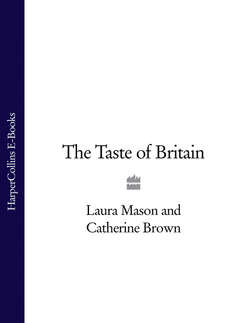Читать книгу The Taste of Britain - Hugh Fearnley-Whittingstall - Страница 170
HISTORY:
ОглавлениеThis light yeast cake is a speciality of the spa town of Bath. There are several theories as to its origin. An early reference in a Bath guidebook of 1780 is to ‘a spungy hot roll’. In 1798, they were again said to be hot rolls, ‘not long ago in vogue in Bath’. Hot bread was much loved at Bath breakfasts (see Bath buns, above). In 1827 there was an account of how Sally Lunns were named after the girl who cried them for sale (‘about thirty years ago’). She and her recipe were adopted and commercialized (OED).
There is a charming but probably apocryphal legend that a Huguenot refugee called Solange Luyon, a name corrupted to Sally Lunn, first made the cakes famous. A building, dating originally from the fifteenth century, is supposed to be the place where she worked. It still houses a restaurant and shop baking Sally Lunns. Bath historian Trevor Fawcett observes that no documentation has ever been produced to support this story.
A completely different hare was started by Eliza Acton (1845). She described her recipe for a ‘solimemne’ as a ‘rich French breakfast cake or Sally Lunn’. Hartley (1954) produced other uses of the word solimemne, variously spelled, and suggests it is a corruption of the French soleil lune, sun and moon. In fact, solimemne is a misspelling of solilem or solimeme which is the name of an enriched brioche from Alsace. The distinguishing feature of solimemes (Larousse, 1938) is that they are split horizontally soon after baking, soaked with melted butter which is absorbed by the dough, then reassembled. Whether they made the transition from Alsace to Bath is not known, but maybe the Huguenot has a place. An alternative proposal is that Sally Lunns were discovered by a French chef when travelling in the West Country - Carême is suggested - and he exported the idea to his homeland, where the name was completely garbled into solimeme. All this is speculation.
The main characteristics, a light richness derived from a high proportion of eggs and cream or butter in the dough, are consistent through the years. Some recipes are lightly spiced or flavoured with lemon peel. However, Maria Eliza Rundell (1807), herself a resident of Bath, likens a plain but light roll to a Sally Lunn. It is split, whilst still warm, into 2 or 3 horizontal slices and spread with butter or clotted cream, then reassembled for immediate consumption. If more than 24 hours old, the cake is usually toasted before eating.
